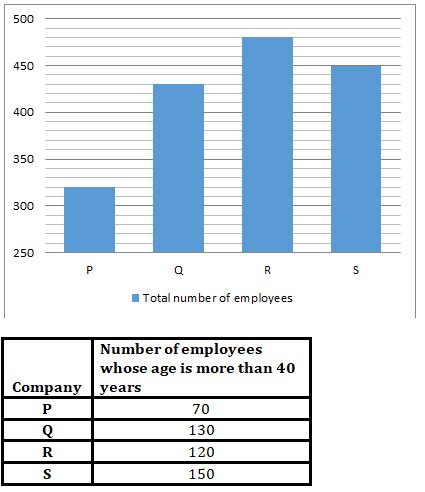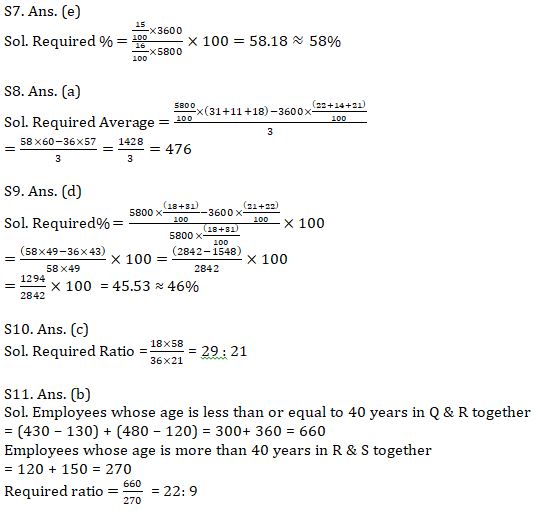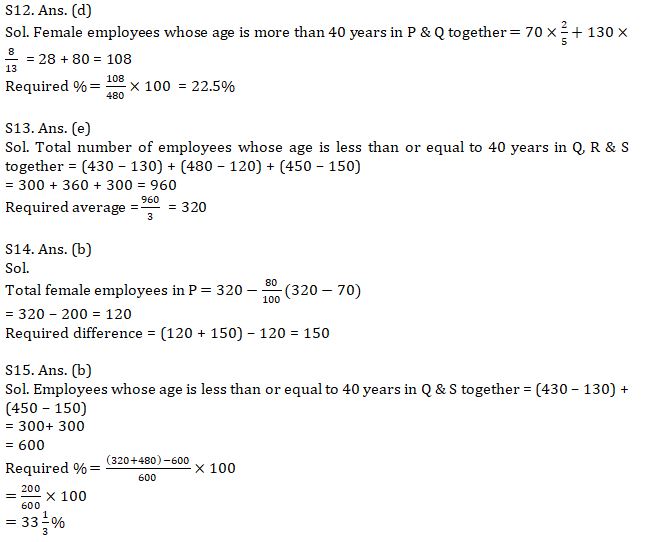Directions (1-5): The following pie-charts show the percentage distribution of runs scored by a batsman against different countries in T20 and ODI matches. Total runs scored by the batsman in T20 and ODI are 2000 and 2800 respectively.


Q1. If he played 14 innings against sri Lanka in ODI and remained not out in 5 innings, find average runs scored by him against Sri Lanka in ODI?
(a) 26 runs
(b) 28 runs
(c) 22 runs
(d) 24 runs
(e) 30 runs
Q2. Runs scored by him batsman against South Africa in T20 are approximately what percent of runs scored by him against England in ODI?
(a) 95%
(b) 99%
(c) 110%
(d) 102%
(e) 107%
Q3. If the batsman had scored 280 runs against Pakistan in T20 matches, what would have been its percentage in the T20 match, if the total runs scored in T20 remains the same?
(a) 16%
(b) 10%
(c) 25%
(d) 14%
(e) 18%
Q4. What is the ratio of total runs scored by him against Zimbabwe, West Indies and Australia together in ODI to the total runs scored by him against Zimbabwe, South Africa and Sri Lanka together in T20?
(a) 3: 2
(b) 5: 3
(c) 15: 14
(d) 9: 7
(e) None of these
Q5. What is the difference between the total runs scored by him against Pakistan, South Africa and Sri Lanka together in ODI and total runs scored by him against Australia, England and New Zealand together in T20?
(a) 276
(b) 296
(c) 286
(d) 306
(e) 316
Directions (6-10): Study the following pie charts carefully and answer the following questions.
Percentage break up of number of children in five different villages and break up of children attending school from those villages.

Q6. What is the total number of children not attending school from village Q & S together?
(a) 528
(b) 508
(c) 518
(d) 618
(e) 628
Q7. The number of children attending school from P is approximately what percent of the number of children from that village?
(a) 54%
(b) 56%
(c) 60%
(d) 53%
(e) 58%
Q8. What is the approximate average number of children not attending school from village T, R and S together?
(a) 476
(b) 458
(c) 464
(d) 470
(e) 466
Q9. The number of children not attending school from village R and T is approximately what percent of total number of children from village R and T together?
(a) 43.65%
(b) 42.5%
(c) 48%
(d) 46%
(e) 49.45%
Q10. What is the ratio of total children from village R to the number of children attending school from that village?
(a) 22 : 21
(b) 29 : 28
(c) 29 : 21
(d) 29 : 27
(e) 23 : 21
Directions (11-15): Study the charts given below and answer the following questions.
Bar chart shows the number of employees in 4 different companies (P, Q, R & S) and table shows the number of employees whose age is more than 40 years in these companies.

Q11. Find ratio of employees whose age is less than or equal to 40 years in Q & R together to number of employees whose age is more than 40 years in R & S together.
(a) 12 : 5
(b) 22 : 9
(c) 2 : 9
(d) 11 : 16
(e) 5 : 8
Q12. If ratio of male to female employees whose age is more than 40 years in P & Q is 3 : 2 & 5 : 8 respectively, then female employees whose age is more than 40 years in P & Q together are what percent of total employees in R?
(a) 17.5%
(b) 12.5%
(c) 35.5%
(d) 22.5%
(e) 31.5%
Q13. Find average number of employees whose age is less than or equal to 40 years in Q, R & S.
(a) 370
(b) 340
(c) 280
(d) 390
(e) 320
Q14. If 80% of employees whose age is less than or equal to 40 years in P are equal to total male employees in P, then find total female employees in P are how much more or less than employees whose age is more than 40 years in R & S together?
(a) 120
(b) 150
(c) 110
(d) 130
(e) 140

Solutions



Click Here to Register for Bank Exams 2021 Preparation Material





 GA Capsule for SBI Clerk Mains 2025, Dow...
GA Capsule for SBI Clerk Mains 2025, Dow...
 The Hindu Review October 2022: Download ...
The Hindu Review October 2022: Download ...
 ECGC PO Scorecard 2025 Out, Check Marks
ECGC PO Scorecard 2025 Out, Check Marks




